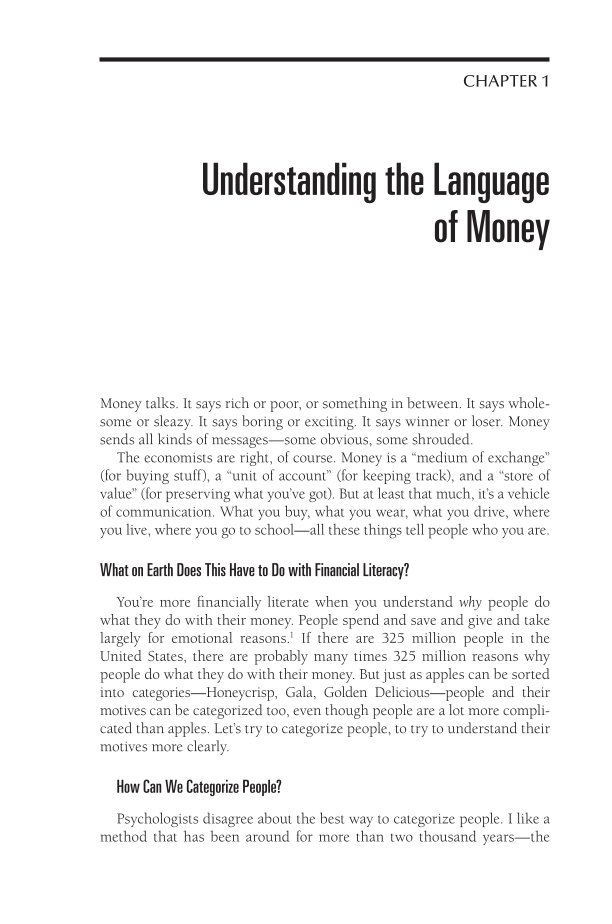CHAPTER 1 Understanding the Language of Money Money talks. It says rich or poor, or something in between. It says whole- some or sleazy. It says boring or exciting. It says winner or loser. Money sends all kinds of messages—some obvious, some shrouded. The economists are right, of course. Money is a “medium of exchange” (for buying stuff), a “unit of account” (for keeping track), and a “store of value” (for preserving what you’ve got). But at least that much, it’s a vehicle of communication. What you buy, what you wear, what you drive, where you live, where you go to school—all these things tell people who you are. What on Earth Does This Have to Do with Financial Literacy? You’re more financially literate when you understand why people do what they do with their money. People spend and save and give and take largely for emotional reasons.1 If there are 325 million people in the United States, there are probably many times 325 million reasons why people do what they do with their money. But just as apples can be sorted into c ategories—Honeycrisp, Gala, Golden Delicious—people and their motives can be categorized too, even though people are a lot more compli- cated than apples. Let’s try to categorize people, to try to understand their motives more clearly. How Can We Categorize People? Psychologists disagree about the best way to categorize people. I like a method that has been around for more than two thousand years—the
Document Details My Account Print multiple pages
Print
You have printed 0 times in the last 24 hours.
Your print count will reset on at .
You may print 0 more time(s) before then.
You may print a maximum of 0 pages at a time.






















































































































































































